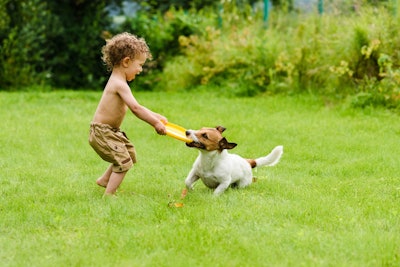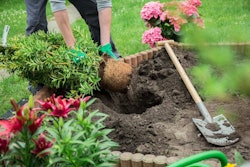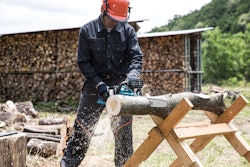
Spending more time outside is a priority for many people. Clients who have pets or children might be spending even more time outside. But nothing can put a damper on fun like stumbling across poisonous plants or pesticides in the landscape.
Poisonous plants aren’t always the stereotypical ones, such as poison ivy or oak, which are dangerous to the touch; the term also refers to plants that are poisonous when ingested. Children and animals can rarely resist putting unknown items in their mouths, especially when it comes to appetizing-looking plants.
Even if your customers don’t have children and pets themselves but know that they will have summer visitors who do, it’s important to talk to them now about the dangers pesticides and certain plants can pose and how best to avoid them.
Common plants to look out for
While they may be beautiful in the landscape, there are a few common plants that can cause issues for our four-legged friends if ingested. Click here to see even more plants that are poisonous for pets.
Be sure to stress to your customers that they don’t have to rid their yards of their favorite plants just because they have visitors coming, but tell them to exercise caution if they know pets or children will be around any of the plants mentioned.
Tulips (Tulipa spp.)
Tulips contain allergenic lactones, and the bulbs are where the concentrated toxic principal is. So be sure to warn customers to watch roaming dogs and make sure they are not digging up the bulbs. When the bulbs are ingested or even just chewed on, they can irritate the tissues of the mouth and esophagus.
Daffodils (Narcissus poeticus)
Daffodils contain lycorine which has a strong emetic property, which can trigger vomiting. Ingesting this plant can lead to more severe symptoms, so if the dog has been exposed to the plant or if symptoms begin to appear, talk to a veterinarian immediately.
Azalea (Rhododendron sp.)
Even eating just a few leaves, flowers or even the nectar of an azalea can cause vomiting. They can also cause pets to fall into a coma and potentially die. While human fatalities from ingesting this plant are rare, it’s still important to monitor small children if these flowers are in the vicinity.
Chrysanthemums (Chrysanthemum sp.)
Chrysanthemums contain toxins such as sesquiterpene, lactones, pyrethrins, and other potential irritants. Depending on the size of the animal that ingests the plant and the amount ingested, symptoms can vary from species to species and size to size.
For a more extensive list of which plants affect cats, dogs, or both, click here.
It’s safe to assume the aforementioned plants that react badly with animals will also prove unbeneficial to humans, but there are a few other specific plants that need mentioning. Two plants that are harmful to both animals and humans are castor beans and oleander.
Castor bean (Ricinus communis)
Castor beans contain the toxin ricin, a highly toxic component that inhibits protein synthesis. Ingesting even one ounce of the seeds can be lethal, and signs typically appear 12 to 48 hours after ingestion.
Oleander (Nerium oleander)
Containing poisons such as digitoxigenin and neriin, oleander’s leaves and flowers are extremely toxic if ingested and can cause diarrhea, severe vomiting, low blood pressure, weakness, blurred vision, hives, lethargy, irregular or slowing heart rate, and even death.
White snakeroot (Ageratina altissima)
Another plant to watch for is the white snakeroot. This North American herb has flat-topped clusters of small, white flowers that contain a toxic alcohol known as tremetol.
Pesticide safety
Regardless of the kind, all pesticides carry a level of toxicity and can pose a threat to humans and animals alike, especially children since they are more sensitive to toxins than adults.
The National Capital Poison Center reports that children younger than six comprise a disproportionate percentage of poisoning cases, including nearly half of all poison exposures, and the highest incidence of poisoning occurred in one- and two-year-olds.
According to Redfin, pesticides and plants were among the top 10 leading causes of poisoning in children younger than six in 2014. Redfin reports that 2.5 percent of poisoning fatalities in children younger than six between the years 2010 and 2014 were due to pesticides.
If your customers want to take a temporary break from using pesticides over the summer, talk to them about alternatives they can use to try and reduce the number of pests present, such as vegetable oil mixed with mild soap, mild soap, and water, apple cider vinegar or garlic, onion and cayenne pepper mixed with liquid soap.
Remind them not to expect the same results that would accompany actual pesticides, but it’s possible that these methods could offer temporary relief until your client is ready to continue pesticide treatments.
If your customers don’t mind the use of pesticides but would, instead, like to try a milder formula just while visitors are around, do your research on other types that might offer subdued chemicals and a lower poison risk.
No matter which option your customer chooses, always be sure to read the labels of pesticides completely before application. For more information on poison safety, click here.












